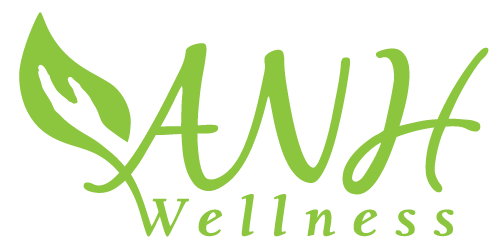Upper Crossed Syndrome – Stop That Slouch!
- ANH Team

- Mar 4, 2022
- 4 min read
Updated: Nov 1, 2023

Do you have neck and shoulder pain/tension? Poor posture could be contributing.
Do you find yourself slumping or rolling your shoulders forward? Do you have trouble reading, driving, or watching TV for long periods of time? Do you have headaches and restricted movement of your head and neck?
You could have Upper Crossed Syndrome (UCS). Don’t let the word ‘syndrome’ scare you. It’s a fancy term for a very common condition that is treatable. Let's dive into what it is and how we can manage it long-term!
What is Upper Crossed Syndrome? How do I treat UCS?
Upper Cross Syndrome, AKA Text Neck, AKA Slouchy McSloucher (just kidding, that last term I made up), affects the musculature of the neck, upper back, and shoulders. It most commonly is caused by poor posture, specifically when sitting or standing for long periods of time with the head and neck are pushed forward. When your muscles adapt to this position, the front neck and mid back musculature become underused/weak, and muscles in the upper back and chest become overused/tight. The overused muscles pull the shoulders forward and push the head forward. The underused muscles are lazy and not doing their job to maintain good posture.
What causes Upper Crossed Syndrome?
Poor posture is the main driver of UCS. Researchers have long seen the syndrome among laundry workers and others whose work demands a lot of bending and twisting. But more frequently these days, people who are at risk for UCS are spending too much time hunched over a laptop or a smartphone. In fact, UCS has even come to be nicknamed “iHunch”.
How do we treat UCS?
We record your mother yelling “Stop slouching! Sit up straight!” and play it on repeat throughout your day. Again, I kid! It’s quite simple – we prescribe stretches and exercises to stretch the tight muscles and strengthen/activate the weak ones. We adjust affected joints that can get restricted due to the muscle imbalance and add more mobility. We also suggest better ergonomics when texting, reading, driving, using the computer, etc, and to become more aware of your posture.
How do I avoid Upper Crossed Syndrome in the future?
Start by practicing good posture, being sure to avoid positions that create discomfort or numbness. In particular, don’t give slouching a chance to become a habit.
Here are some other things to try for better posture:
Instead of leaning your head down to look at a book or screen, raise the book or screen up to eye level.
Set the height of your chair or desk so you can attain proper posture.
If you sit for long periods of time, remember to take a break and stretch every so often.
If you stand for long periods of time, support one foot on a short, sturdy object.
When in bed, support your neck and lower back with rolled towels or pillows of that size.
Exercise the muscles around your neck, shoulders, and chest at least two or three times per week.
Try to exercise the muscles of your core, your back and abdomen, every day, even if just by taking a short walk.
What are some good stretches to treat UCS?
Below are some examples of stretches and exercises we would prescribe. Feel free to try these at home, and if you need a resistance band here is a link to our amazon store. A massage gun works well to loosen up these tight muscles as well. BONUS – Check Out Our Amazon Store Here!
Below are some instructions on stretches that you can do at home:

Upper Trapezius and Levator Scapulae Stretch:
This can be done standing or sitting. Change the position of your chin (up and down) to stretch different parts of the muscles. Hold each position for 10-15 seconds, and perform as much as is comfortable or possible.

Pectoralis Stretch:
This can an be performed in a doorway, often called the Pec Doorway Stretch. The above photo is a great example of what to do. The further you lean forward and open your chest, the more you will feel the stretch. Hold stretch for 10-15 seconds and perform as much as is comfortable or possible.

Chin Retraction Exercise:
Basically, you'll want to give yourself a double chin. This will help strengthen the muscles in the front of your neck. To add more resistance, put a resistance band behind your head and hold the ends in front of your face so that you can see your fists. Provide a minimal amount of tension and then perform the exercise. To start, try 3 sets of 10-12, once a day, without the band. You can work your way up from there by adding more reps, sets, resistance, or times per day. Tip: use a weaker resistance band, one without a lot of tension.

Rhomboids Exercise:
Your hand positioning on the band determines the amount of resistance. Make sure to squeeze your shoulder blades together in the second step. The closer your hands are together in step one, the more resistance will be applied, and farther apart will lessen the resistance. Again, you don’t need a ton of resistance to feel this. To start, try 3 sets of 8-10 once a day. You can always add or subtract from that depending on difficulty.
Let us know how you do!
And be on the lookout for our weekly blogs that will contain helpful content to assist you in your health and wellness needs.
By: Dr. Ary Laudeman
Chiropractor at ANH Wellness
Disclaimer: "The information including but not limited to text, graphics, images, and other material contained on this website is for informational purposes only. No material on this site is intended to be a substitute for professional medical advice, diagnosis, or treatment."



How do I access the stretches please?